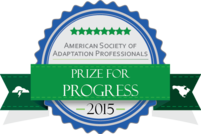STAR Community Rating System
On June 11, 2015, the City of Baltimore was awarded the certified 5-STAR
Community Rating and recognized as a top achiever in national
sustainability by STAR Communities, a DC-based nonprofit that
administers the rating system. Baltimore is
only the third community in the nation to achieve the 5-STAR Rating, the
highest level of certification. Mayor Stephanie
Rawlings-Blake accepted the recognition at a celebration event hosted by
the City’s Office of Sustainability in Federal Hill Park.
 The STAR Community Rating System is the nation’s first comprehensive
framework and certification program for evaluating local sustainability.
Local leaders use the rating system’s evaluation measures to assess
their current level of sustainability, set targets for moving ahead, and
measure progress along the way. The rating system encompasses
economic, environmental and social performance measures for both local
governments and the broader community.
Baltimore City’s application
detailed the City’s achievements across 7 goal areas, 44 sustainability
objectives, with a total of 526 different measurable indicators. The
goal areas include built environment; climate and energy; economy and
jobs; equity and empowerment; education, arts and community; health and
safety; and natural systems. A few examples of notable achievements within the assessment
include:
|
-
Climate & Energy:
Baltimore has demonstrated a 17.85% reduction in community-wide
greenhouse gas (GHG) emissions over the past 5 years. The City is a
leader in climate adaptation, hazard mitigation and resilience.
-
Education, Arts & Community:
Baltimore demonstrates high levels of Community Cohesion, in part due
to its strong neighborhood culture with 98% of residents living within one
mile of a community venue that offers free services and events.
-
Innovation & Process:
The City has taken an innovative approach to addressing issues caused
by vacant properties, including scheduling regular mowings and running
programs like Vacants to Value and the Growing Green Initiative.
|
|
|
To learn more about the STAR Community Rating System, visit the STAR Communities website at www.STARcommunities.org. To learn more about the City’s sustainability efforts, visit the Office of Sustainability website at www.baltimoresustainability.org.
 Adaptation Award
 The American Society of Adaptation Professionals (ASAP) awarded the
first ever Prize for Progress in Adaptation to the City of Baltimore at
the National Adaptation Forum in May, 2015. Baltimore is on the cutting
edge of innovation, incorporating climate preparedness into all aspects
of city planning. The key element that puts the City ahead of others is
the Disaster Preparedness Plan
(DP3), which was adopted in October, 2013.
|
Click here to view the award summary prepared by ASAP .
 Since adoption of the DP3,
Baltimore has focused on implementation including extensive
stakeholder engagement with community groups and traditionally under
served communities to create more than 1,200 emergency plans and
emergency kits through the Make a Plan. Build a Kit. Help Each Other
campaign. Additionally, the City has:
|
- Adopted
a new floodplain code that develops flood resilience areas, uses the
0.2% flood as the regulatory standard, increases freeboard (the elevation added to the base flood elevation)to two
feet, and integrates with ASCE-24 (American Society of Civil Engineers Flood Resistant Design and Construction document).
- Created
the Growing Green Initiative, which uses sustainable, innovative, and
cost-effective practices for reusing vacant land to green neighborhoods,
reduce stormwater runoff, grow food, sequester carbon, and create
community spaces and natural habitat areas.
- Included
Adaptation in Capital Improvement Processes (CIP) so that all
departments requesting CIP funding explain how their project takes
climate change into account and makes the city more resilient.
Click here for more information about the Disaster Preparedness Project and Plan (DP3).
For more information about the American Society of Adaptation Professionals visit their website at https://adaptationprofessionals.org/
  Cool off with "Tasty History"!
Carriage located at the Baltimore Museum of Industry.
Nothing
dispels summer heat like ice cream, especially in Baltimore. It is not surprising then, that a Baltimorean
was the first to begin producing ice cream on a large scale. In 1851 Jacob Fussell began production in
York County, Pennsylvania and shipped it to Baltimore. Soon thereafter Fussell opened an ice cream
plant in the area known today as Oldtown. By 1886 after moving to Washington D.C., he
was selling ice cream up and down the East Coast.
Image courtesy of www.baltimore.picturesofus.net. |